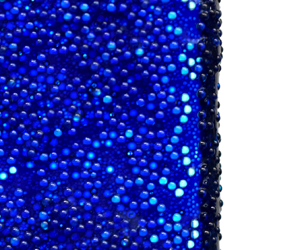Crossref Citations
This article has been cited by the following publications. This list is generated based on data provided by
Crossref.
Rajesh, Sreeram
Peddada, Sumukh S.
Thiévenaz, Virgile
and
Sauret, Alban
2022.
Pinch-off of bubbles in a polymer solution.
Journal of Non-Newtonian Fluid Mechanics,
Vol. 310,
Issue. ,
p.
104921.
Thiévenaz, Virgile
and
Sauret, Alban
2022.
The onset of heterogeneity in the pinch-off of suspension drops.
Proceedings of the National Academy of Sciences,
Vol. 119,
Issue. 13,
Jeong, D.-H.
Xing, L.
Boutin, J.-B.
and
Sauret, A.
2022.
Particulate suspension coating of capillary tubes.
Soft Matter,
Vol. 18,
Issue. 42,
p.
8124.
Jeong, Deok-Hoon
Xing, Langqi
Lee, Michael Ka Ho
Vani, Nathan
and
Sauret, Alban
2023.
Deposition and alignment of fiber suspensions by dip coating.
Journal of Colloid and Interface Science,
Vol. 650,
Issue. ,
p.
407.
Song, Jisoo
Yu, Dongkeun
Jo, Euihyun
and
Nam, Jaewook
2023.
Measuring coating layer shape in arbitrary geometry.
Physics of Fluids,
Vol. 35,
Issue. 12,
Zürner, Till
Toupoint, Clément
De Souza, David
Mezouane, Dylan
and
Monchaux, Romain
2023.
Settling of localized particle plumes in a quiescent water tank.
Physical Review Fluids,
Vol. 8,
Issue. 2,
He, Haiyang
Wu, Ting
Chen, Yi-Feng
and
Yang, Zhibing
2023.
A pore-scale investigation of microplastics migration and deposition during unsaturated flow in porous media.
Science of The Total Environment,
Vol. 858,
Issue. ,
p.
159934.
Copeland, Connor
Gabbard, Chase T.
and
Bostwick, Joshua B.
2023.
Dip coating of viscous granular suspensions.
Colloids and Surfaces A: Physicochemical and Engineering Aspects,
Vol. 674,
Issue. ,
p.
131885.
Xu, Zhikun
Wang, Tianyou
and
Che, Zhizhao
2023.
Breakup of particle-laden droplets in airflow.
Journal of Fluid Mechanics,
Vol. 974,
Issue. ,
Pelosse, Alice
Guazzelli, Élisabeth
and
Roché, Matthieu
2023.
Probing dissipation in spreading drops with granular suspensions.
Journal of Fluid Mechanics,
Vol. 955,
Issue. ,
Jebali, Syrine
Vayer, Marylène
Belal, Khaled
Mahut, Frédéric
and
Sinturel, Christophe
2024.
Dip-coating deposition of nanocomposite thin films based on water-soluble polymer and silica nanoparticles.
Colloids and Surfaces A: Physicochemical and Engineering Aspects,
Vol. 680,
Issue. ,
p.
132688.
Liu, Xingcen
and
Li, Junbai
2024.
Peptide Self‐Assembly and Engineering.
p.
301.
Waheibi, Rony A.
and
Hsiao, Lilian C.
2024.
Pairing-specific microstructure in depletion gels of bidisperse colloids.
Soft Matter,
Vol. 20,
Issue. 45,
p.
9083.
Khamaysi, Iyad
Firman, Ronen
Martin, Patrick
Vasilyev, Gleb
Boyko, Evgeniy
and
Zussman, Eyal
2024.
Mechanical Perspective on Increasing Brush Cytology Yield.
ACS Biomaterials Science & Engineering,
Vol. 10,
Issue. 3,
p.
1743.
Maddox, Justin
and
Sauret, Alban
2024.
Capillary sorting of fiber suspensions by dip coating.
Physical Review Applied,
Vol. 22,
Issue. 3,
Ding, D.
Gabbard, C. T.
and
Bostwick, J. B.
2024.
Dip coating of shear-thinning particulate suspensions.
Soft Matter,
Vol. 20,
Issue. 40,
p.
8068.
Rajesh, Sreeram
and
Sauret, Alban
2025.
Impact and spreading dynamics of a drop of fiber suspension on a hydrophilic solid substrate.
Journal of Colloid and Interface Science,
Vol. 692,
Issue. ,
p.
137518.
Singh, Garima
and
Tiwari, Naveen
2025.
Coating flow of a liquid film with colloidal particles on a vertical fiber.
European Journal of Mechanics - B/Fluids,
Vol. 109,
Issue. ,
p.
271.
Justa, Purnima
Jaswal, Nancy
Rana, Deeksha
Kumar, Hemant
Yadav, Neha
Bahadur, Vijay
and
Kumar, Pramod
2025.
Properties and Applications of Ormosil for Biosensing.
Silicon,
Vol. 17,
Issue. 5,
p.
953.
